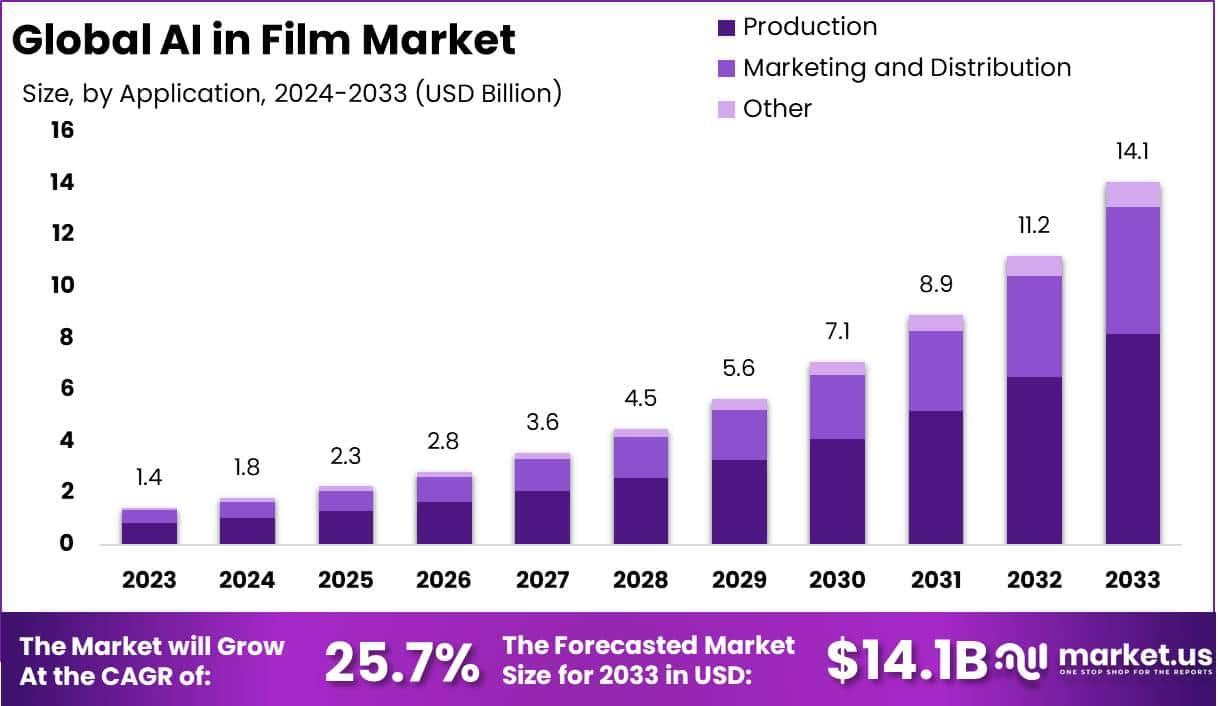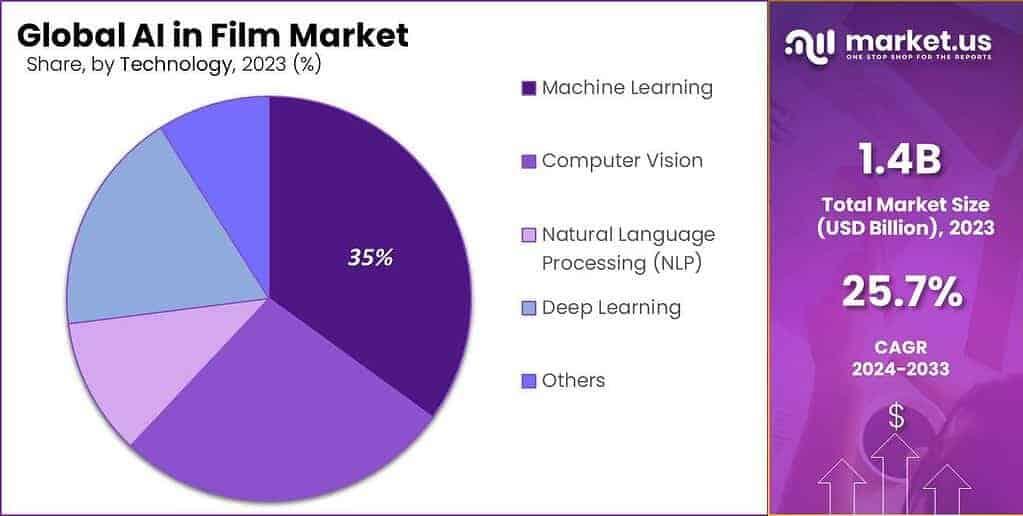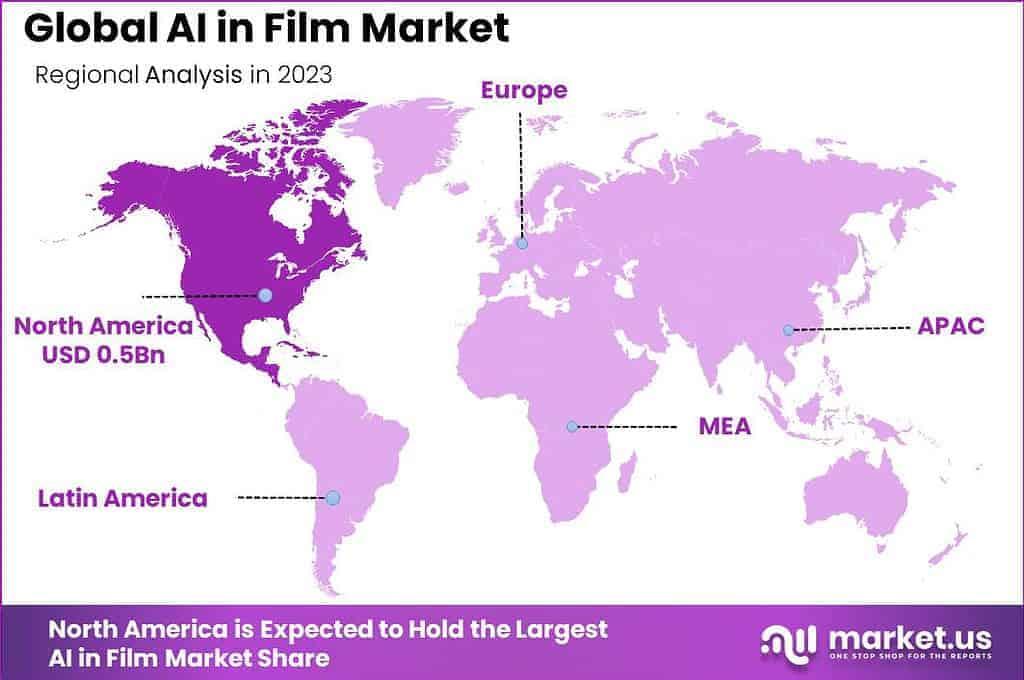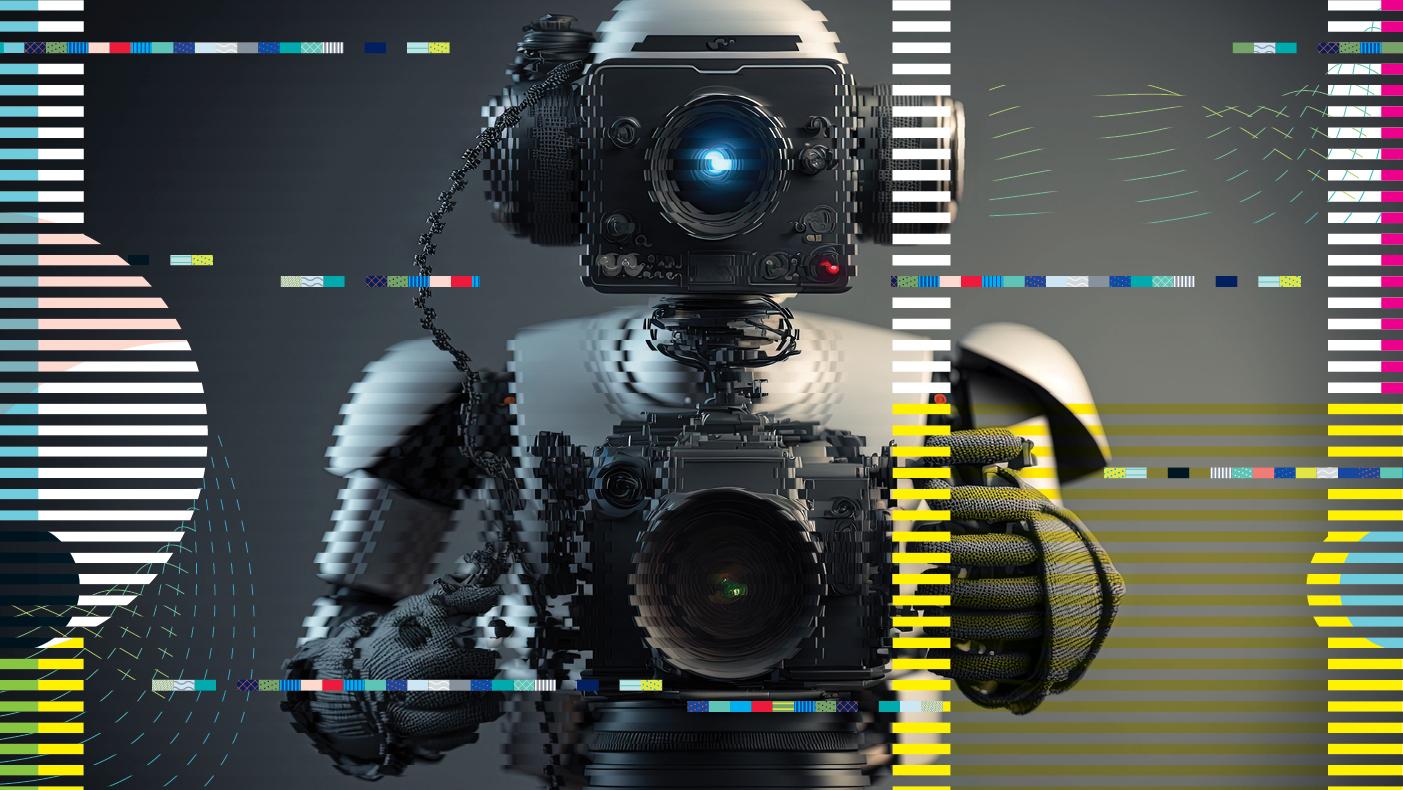In an era where algorithms shape our playlists, news, and even social circles, the film industry stands on the brink of a transformative shift. Traditional avenues of film distribution-once dominated by theaters, DVD releases, and streaming platforms-are now being challenged by a new contender: AI-curated feeds tailored to individual tastes. As artificial intelligence grows more sophisticated, it promises to redefine not just what we watch, but how films find their audiences. This article explores the emerging landscape of direct-to-AI distribution, examining how personalized, algorithm-driven film delivery could rewrite the rules of storytelling and viewer engagement in the years to come.
Table of Contents
- The Evolution of Film Distribution in the Age of Artificial Intelligence
- How AI Algorithms Personalize Viewer Experiences and Influence Content Selection
- Challenges and Ethical Considerations in AI-Curated Film Feeds
- Strategies for Filmmakers to Adapt and Thrive in AI-Driven Distribution Models
- Balancing Human Creativity with Machine Efficiency for Future Film Ecosystems
- Frequently Asked Questions
- The Way Forward
The Evolution of Film Distribution in the Age of Artificial Intelligence
Once confined to physical theaters and later to traditional streaming platforms, film distribution is undergoing a radical transformation driven by artificial intelligence. AI algorithms are not just recommending movies but are beginning to shape the entire viewing experience by curating personalized feeds tailored to individual tastes, moods, and even viewing histories. This shift means that films may no longer need to fight for attention in generic catalogs but instead could be delivered directly to viewers through AI-powered channels that understand their unique preferences.
In this reimagined ecosystem, filmmakers and distributors gain unprecedented tools to analyze audience engagement and optimize release strategies in real time. AI can predict which demographic segments will resonate with specific genres or narratives, enabling targeted promotional campaigns that maximize reach and impact. This dynamic approach contrasts sharply with the one-size-fits-all distribution methods of the past, offering a more efficient path from production to audience.
Moreover, the rise of AI-curated feeds fosters new opportunities for independent creators who might otherwise struggle to compete with blockbuster marketing budgets. By leveraging intelligent algorithms, smaller films can find their niche audiences without traditional gatekeepers. Below is a simplified comparison of traditional vs. AI-driven film distribution models:
| Aspect | Traditional Distribution | AI-Driven Distribution |
|---|---|---|
| Audience Targeting | Broad and generic | Highly personalized |
| Marketing | Fixed campaigns | Adaptive and data-driven |
| Content Discovery | Manual browsing | Algorithmic curation |
| Release Timing | Set schedules | Optimized dynamically |
As artificial intelligence continues to advance, the line between content creation, distribution, and consumption will blur further, promising a future where film reaches audiences not just faster but smarter, anticipating their desires before they even know them.
How AI Algorithms Personalize Viewer Experiences and Influence Content Selection
At the heart of AI-driven content selection lies a sophisticated dance of data points and predictive modeling. These algorithms analyze a viewer’s past interactions, preferences, and even micro-behaviors such as pause duration or scene replays to craft a uniquely tailored feed. By continuously learning from the user’s evolving tastes, AI can anticipate not just what genres or themes might appeal, but also the mood and pacing that resonate most at any given moment.
Personalization extends beyond simple recommendations. AI employs collaborative filtering, natural language processing, and computer vision to decode complex patterns within vast content libraries. This multi-layered approach allows platforms to surface hidden gems or niche films that might otherwise be lost in the noise, fostering a more engaging and diverse viewing experience.
- Behavioral Analysis: Tracks viewing habits, skips, and search queries.
- Sentiment Detection: Analyzes feedback and reviews to refine suggestions.
- Context Awareness: Considers time of day, device type, and location for relevance.
| AI Technique | Role in Personalization | Example Outcome |
|---|---|---|
| Collaborative Filtering | Matches users with similar tastes | Suggests indie films popular in a viewer’s peer group |
| Natural Language Processing | Interprets plot summaries and reviews | Recommends films with specific themes like redemption or adventure |
| Computer Vision | Analyzes visual elements like color and setting | Identifies and suggests visually striking cinematography |
By seamlessly integrating these techniques, AI not only personalizes but also democratizes film discovery, empowering viewers to explore new narratives and creators to reach audiences who truly appreciate their work. This transformation hints at a future where film distribution pivots from broad, one-size-fits-all releases to dynamic, AI-curated showcases tailored to individual imaginations.

Challenges and Ethical Considerations in AI-Curated Film Feeds
As AI algorithms gain prominence in curating personalized film feeds, several complex challenges emerge, testing the balance between innovation and responsibility. One significant concern is the transparency of recommendation systems. Audiences often remain unaware of the criteria shaping their viewing options, which may inadvertently reinforce existing biases or limit exposure to diverse cinematic voices. This opacity raises questions about the role of AI in shaping cultural consumption and the potential homogenization of taste.
Data privacy is another critical issue. AI-curated feeds rely heavily on user data, from viewing habits to demographic profiles. The ethical handling of such sensitive information demands stringent safeguards to prevent misuse, unauthorized sharing, or manipulation. Users must retain control over their data, with clear consent mechanisms and easy opt-out options to maintain trust in these emerging platforms.
Moreover, the question of authorship and creative control becomes murky when AI intermediates the distribution channel. Filmmakers may find their work repackaged or prioritized based on algorithmic preferences rather than artistic intent, which could dilute the intrinsic value of storytelling. The industry must develop frameworks to ensure that creators retain agency and receive equitable recognition and compensation in this AI-driven ecosystem.
- Algorithmic bias: Avoiding reinforcement of stereotypes and promoting diversity.
- Transparency: Clarifying how recommendations are generated.
- User autonomy: Empowering viewers to customize feed parameters.
- Intellectual property: Protecting filmmakers’ rights in AI-curated contexts.
| Aspect | Ethical Concern | Potential Solution |
|---|---|---|
| Data Privacy | Unauthorized data usage | Robust encryption & user consent |
| Algorithm Bias | Lack of content diversity | Regular bias audits & diverse datasets |
| Creative Control | Algorithm-driven content curation | Transparent curation criteria & creator rights |
| Transparency | Opaque recommendation logic | Clear user explanations & feedback loops |

Strategies for Filmmakers to Adapt and Thrive in AI-Driven Distribution Models
To navigate the evolving landscape where AI curates film content for audiences, filmmakers must embrace agility and strategic innovation. Building a strong digital presence is no longer optional; it’s essential. This means actively engaging with AI platforms by understanding their algorithms and tailoring metadata-such as tags, descriptions, and keywords-to enhance discoverability. Filmmakers should think of their films not just as art but also as data points that need to align with AI’s content curation logic.
Collaboration with AI developers and distributors can unlock unique opportunities. By participating in beta programs or providing feedback on AI recommendation systems, creators gain insight into how their films are evaluated and positioned. This collaborative approach allows for the refinement of storytelling elements that resonate with AI-driven audience preferences, such as pacing, genre blending, or even dialogue density.
- Optimize visual elements: Thumbnails and posters optimized for AI recognition can boost click-through rates.
- Leverage user data: Analyze viewer patterns to tailor sequels or spin-offs for better AI curation.
- Experiment with formats: Shorter films or episodic content may perform better within AI feeds.
| Strategy | Benefit | Example |
|---|---|---|
| Metadata Optimization | Higher AI visibility | Using genre-specific keywords |
| Audience Analytics | Targeted content creation | Producing sequels based on viewer habits |
| Visual Branding | Improved engagement | AI-friendly thumbnails |
Ultimately, thriving in AI-driven distribution requires filmmakers to become adept storytellers and savvy data strategists simultaneously. Those who can blend creativity with algorithmic insight will not only survive but help shape the future of film consumption.

Balancing Human Creativity with Machine Efficiency for Future Film Ecosystems
As artificial intelligence continues to revolutionize the film industry, a delicate dance emerges between the boundless imagination of human creators and the relentless precision of machine algorithms. The future film ecosystem hinges on a harmonious integration, where AI doesn’t replace creative vision but amplifies it-curating content that resonates deeply while streamlining distribution processes.
AI-curated feeds offer an unprecedented opportunity to tailor film recommendations with razor-sharp accuracy, sifting through vast libraries to identify hidden gems and niche genres that might otherwise be overlooked. However, this efficiency must be carefully balanced with preserving the serendipity and emotional nuance that only human creativity can inject. Audiences crave stories that surprise and move them, not just ones that fit a predefined pattern.
- Human Creativity: Drives unique storytelling, emotional depth, and cultural authenticity.
- Machine Efficiency: Enables personalized curation, data-driven insights, and optimized distribution.
- Collaborative Synergy: Fosters innovation by combining intuitive artistry with analytical power.
Consider the following overview of key elements in this evolving relationship:
| Aspect | Human Role | Machine Role |
|---|---|---|
| Storytelling | Conceptualization, emotional nuance | Trend analysis, audience segmentation |
| Content Curation | Creative selection, thematic coherence | Real-time data filtering, personalized recommendations |
| Distribution | Strategic positioning, brand building | Automated scheduling, performance tracking |
The future lies in crafting ecosystems where AI acts as a thoughtful assistant, guiding viewers through cinematic landscapes without diluting the artistry that makes film an enduring human experience. This balance promises to redefine how stories find their audiences, making the journey as compelling as the destination.
Frequently Asked Questions
Q&A: The Future of Film Distribution – Direct to AI-Curated Feed?
Q1: What exactly is an AI-curated film feed?
A1: An AI-curated film feed is a personalized stream of movies and videos, selected by artificial intelligence based on an individual viewer’s preferences, viewing habits, and even mood indicators. Instead of browsing catalogs or waiting for theatrical releases, audiences receive handpicked content tailored precisely to their tastes.
Q2: How could this change traditional film distribution?
A2: Traditional film distribution relies on a chain of theaters, streaming platforms, and physical media. AI-curated feeds could bypass many of these intermediaries by delivering films directly to viewers in a seamless, personalized way. This might reduce marketing costs, shorten release windows, and democratize access to niche or independent films that often struggle to find an audience.
Q3: Will filmmakers lose control over how their work is presented?
A3: It’s a double-edged sword. On one hand, AI algorithms might prioritize content based on engagement metrics, potentially sidelining artistic intent or thematic nuances. On the other, filmmakers could leverage AI to reach targeted audiences more efficiently, gaining insights into viewer reactions and adjusting distribution strategies in real time.
Q4: Could AI curation affect the diversity of films people watch?
A4: AI tends to reinforce patterns, so there’s a risk of creating echo chambers where viewers only see similar types of films. However, if designed thoughtfully, AI systems can introduce serendipity-surfacing unexpected genres or international titles-to broaden horizons and foster cultural exchange.
Q5: How might this impact the film industry economically?
A5: Direct-to-AI-feed distribution could disrupt traditional revenue models, shifting emphasis from box office sales and licensing deals to subscription services, microtransactions, or even AI-driven tipping systems. Smaller studios might gain leverage, while major players adapt to new ways of monetizing content.
Q6: What role will human curators play in the future of film distribution?
A6: Human curators might evolve into AI trainers and overseers, ensuring algorithms respect artistic values and ethical considerations. Their expertise will remain crucial in maintaining a balance between personalization and cultural significance, preventing the feed from becoming a purely data-driven echo chamber.
Q7: When might we see widespread adoption of AI-curated film feeds?
A7: Elements of AI curation are already in use on streaming platforms today. Fully direct-to-AI-feed distribution models could emerge within the next decade, as AI technologies mature and audiences grow comfortable with highly personalized, algorithm-driven content delivery.
Q8: Should audiences be concerned about privacy with AI-curated feeds?
A8: Privacy is a legitimate concern. AI-driven curation relies on collecting and analyzing user data, which calls for transparency, strict data protection policies, and user control over what information is shared. Responsible AI design will be key to maintaining trust.
This Q&A explores how AI-curated feeds might redefine the film distribution landscape-balancing innovation with challenges to artistry, diversity, and privacy. The future of cinema could be as much about algorithms as auteurs.
The Way Forward
As the silver screen’s glow shifts from theater marquees to personalized AI-curated feeds, the future of film distribution stands at a crossroads of innovation and tradition. Whether this evolution will democratize storytelling or reshape the very essence of cinematic experience remains a story still unfolding. One thing is certain: in the age of algorithms and artificial intelligence, the way we discover and consume films will never be quite the same. The reel keeps turning-only now, it’s guided by the unseen hand of technology, inviting us all to watch what comes next.
